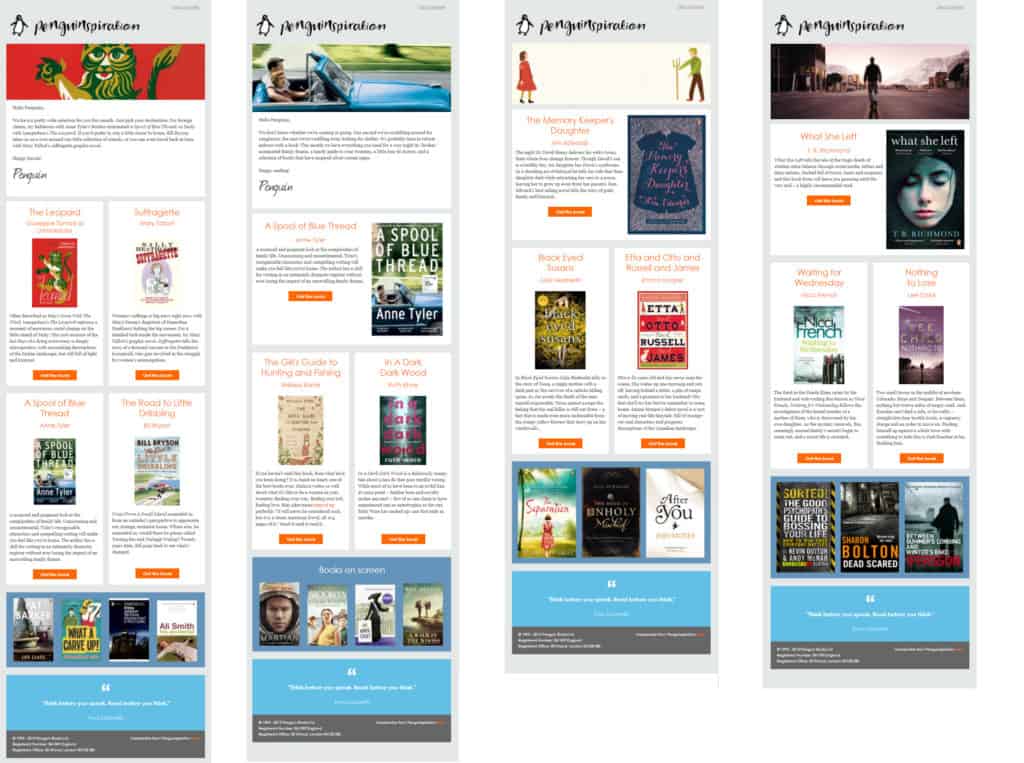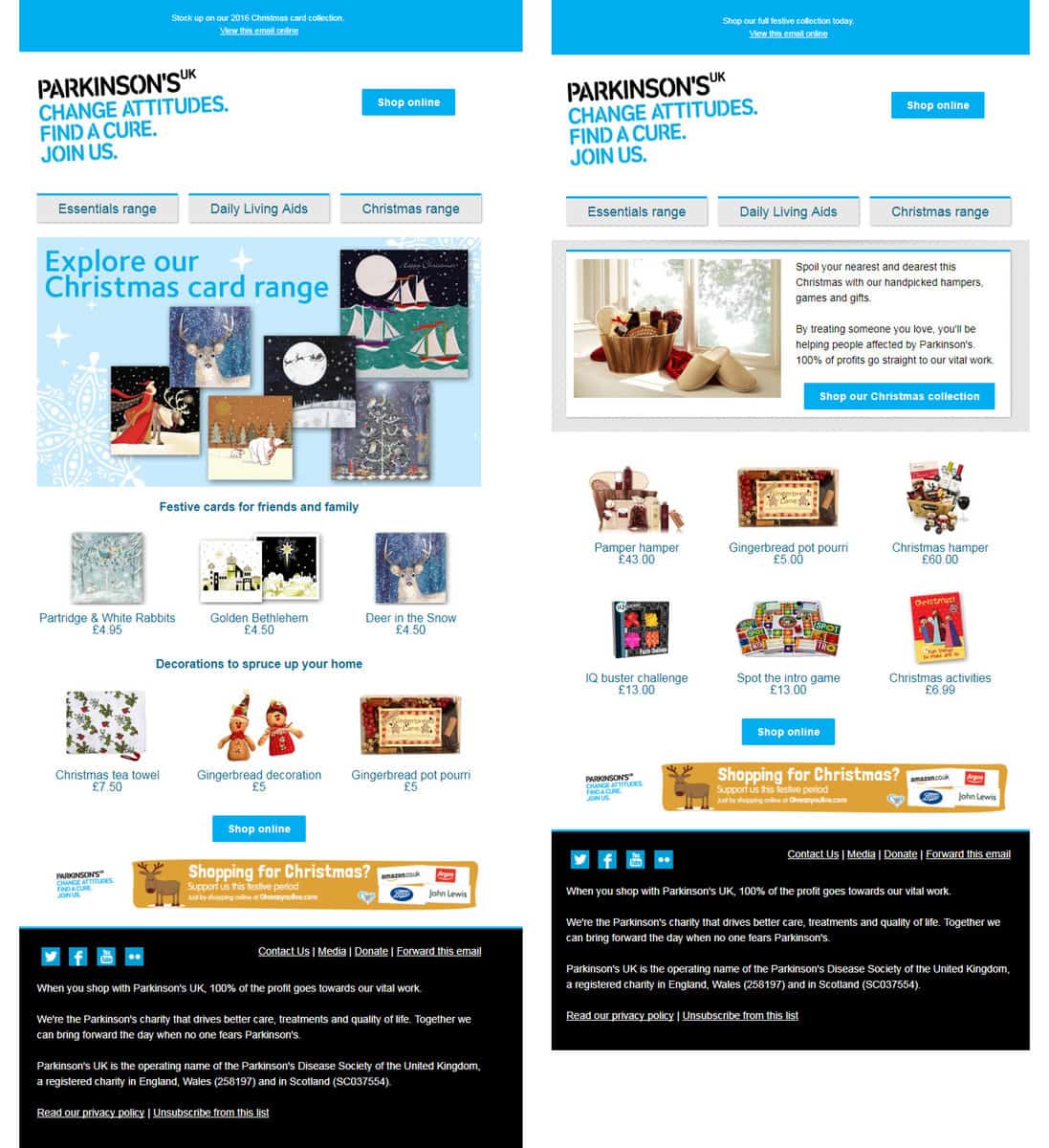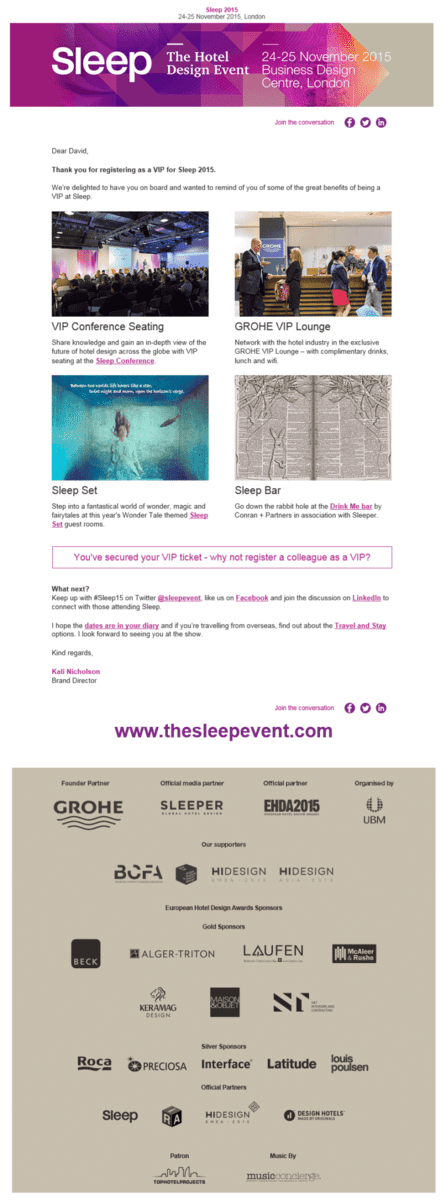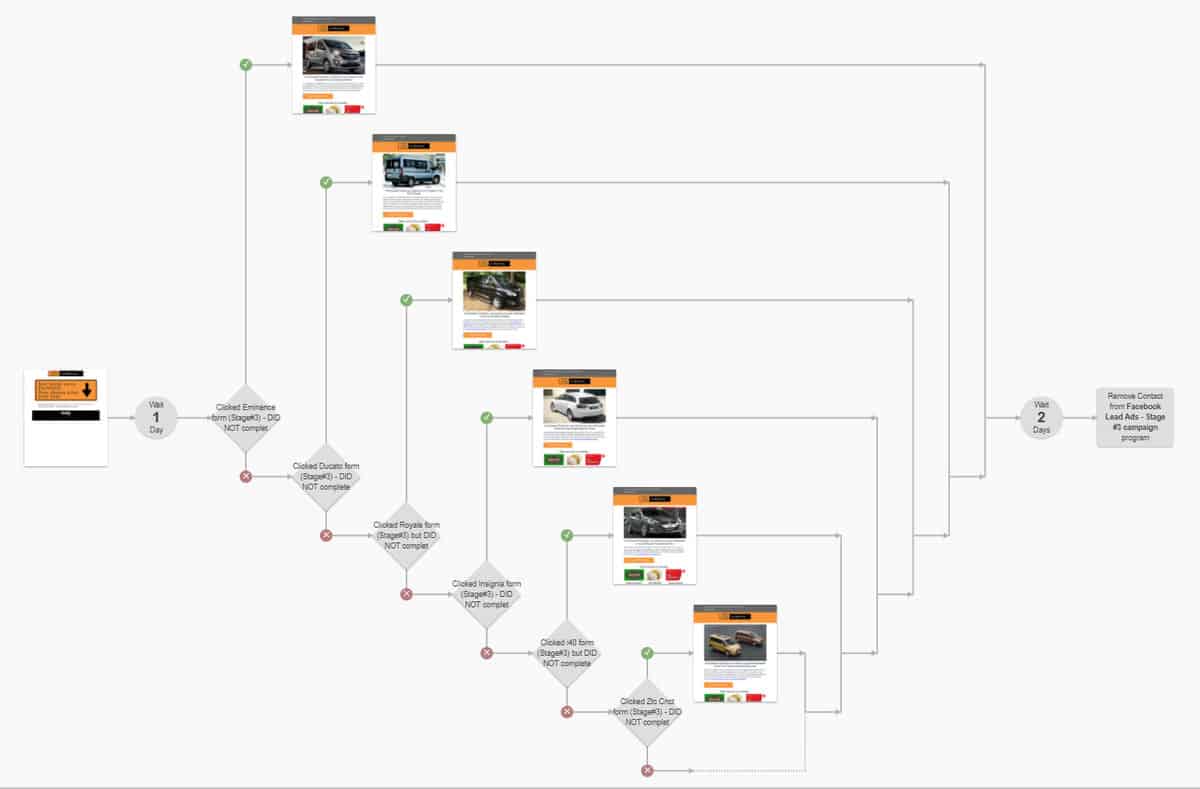In previous posts, we have mentioned that segmentation is key to improve ROI.
However, if you still think that is a time-consuming task and/or difficult to implement, the following examples will hopefully provide some inspiration and give you some ideas that you can implement in your own marketing:
Personalize your emails through product recommendations.
Our VP of Marketing Insights, Ryan Phelan, loves to say that “Personalization is the destination and segmentation is the vehicle”. One way of achieving this is using reported data – the information collected from consumer interactions such as account registrations, surveys or competitions – and making product recommendations. Doing this not only lets the customer know that you are aware of their likes and dislikes, but it is also an ingenious way to do some further cross-promotion.
Recently, Penguin Random House, inspired their readers with personalized book recommendations based on their answers to a short questionnaire about their reading habits and preferred genres. This also helped Penguin enrich their current data by gathering more information on their customers.

Recommendations were then delivered in the form of monthly email newsletters segmented by buyer profile: chart shoppers, heat seekers, connectors, connoisseurs, pioneers and thinkers. This resulted in a 59 % open rate across the whole cycle.

Another way of achieving this is to use your transactional data to personalize your emails, as Parkinson’s UK did for their Christmas promotion. Based on previous interactions and buys, they segmented their customers into 3 categories: customers who purchased cards in 2015, customers who purchased a product in 2016, and members of the charity who purchased a product in 2016. These segments were sent a series of targeted emails, encouraging subscribers to make a purchase. This resulted in a 94% year on year uplift in revenue, as well as an increase in engagement and open rates.

Filtering on behavioral data
Segmenting your behavioral data is a must, particularly in the events industry! This can help with opens and CTORs as well as enhance the overall customer journey. For example, Environmental Finance filtered their list based on contacts that had previously expressed interest in an upcoming event. Their filter looked at subscribers that clicked on related links from previous campaigns. By mentioning the name of the event in the subject line, they captured the attention of those who were already interested and achieved a 74% open rate.
Another example comes from UBM. The automated journey for their Sleep event achieved 119% open rates and 76% higher click-to-open rates. Based on the pre-registration forms, visitors entered a segmented program, providing key event details about Sleep. They filtered based on the following categories: VIPs, regular visitors and those registered by a colleague. This enhanced the overall customer experience as recipients were receiving the details most pertinent to them.
Segmentation helped them to look at their emails and change them based on the reactions of each category. Part-way through the cycle, the emails for the ‘VIP’ and ‘registered by a colleague’ series were changed to include more images, less text and fewer links. This change resulted in an increase of the average click- to-open rate from 11.5% to 21.1% for the VIP emails. Overall, UBM achieved a 9 % increase in visitors compared to the previous year.

It’s important to mention that behavioral data segmentation does not need to be limited to your ESP – an integrated cross channel approach is very much advised. One of our agencies, Buzzed Up, helped their client The Taxi Shop create such an approach by using Facebook advertising to qualify inquiries and website traffic. They then used a filter system to segment based on product category and contacts that had previously expressed an interest in minibus taxis, either overtly (by filling in a preference center form) or indirectly (by clicking on related products in email campaigns).
BuzzedUp created multiple automated programs to familiarize buyers with the brand, or re-engage disengaged contacts. One of these programs segmented the data based on interest customers had previously expressed in terms of vehicle type to match them to a specific email offer. This resulted in a 26 % open rate and 823 % ROI.

The examples above prove that, regardless of the different types of data you hold or how advanced your segmentation, it is very important that you make that first step. Time constraints are an issue for marketers, agencies and companies alike, yet even the simplest of filters can really have an impact on your results. To get started, first ask yourself the following questions about your KPIs and your customers:
- What are your objectives and how will success be measured?
- What do you want customers to do?
- Who are your customers?
- What is the customer journey and what data is needed?
Secondly, look at your data and consider the following:
- What type of data do you currently have?
- What further details would you need to find out?
- What filters would you need to implement in order to find out these details?
- Do you need more categories or are there enough?
- Can you personalize your emails according to your chosen segments?
- Can this be an integrated approach?

